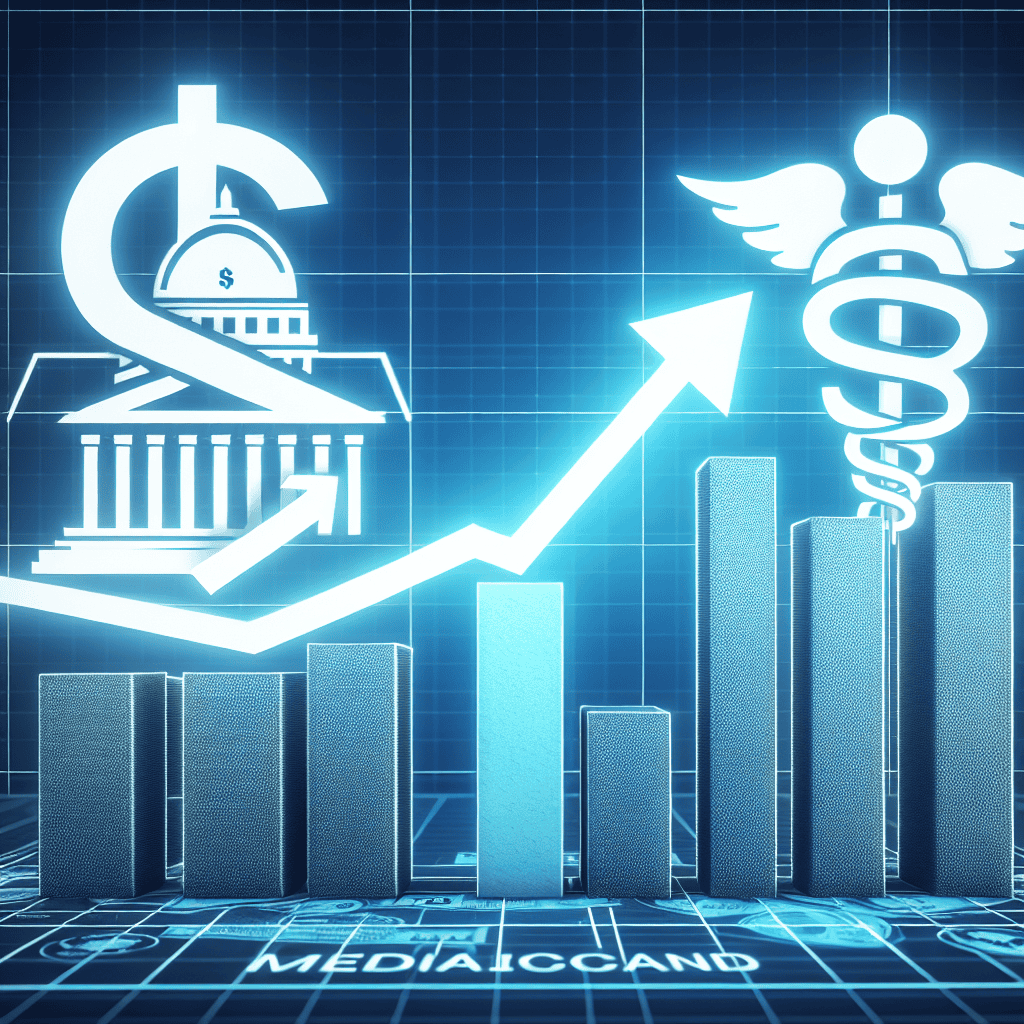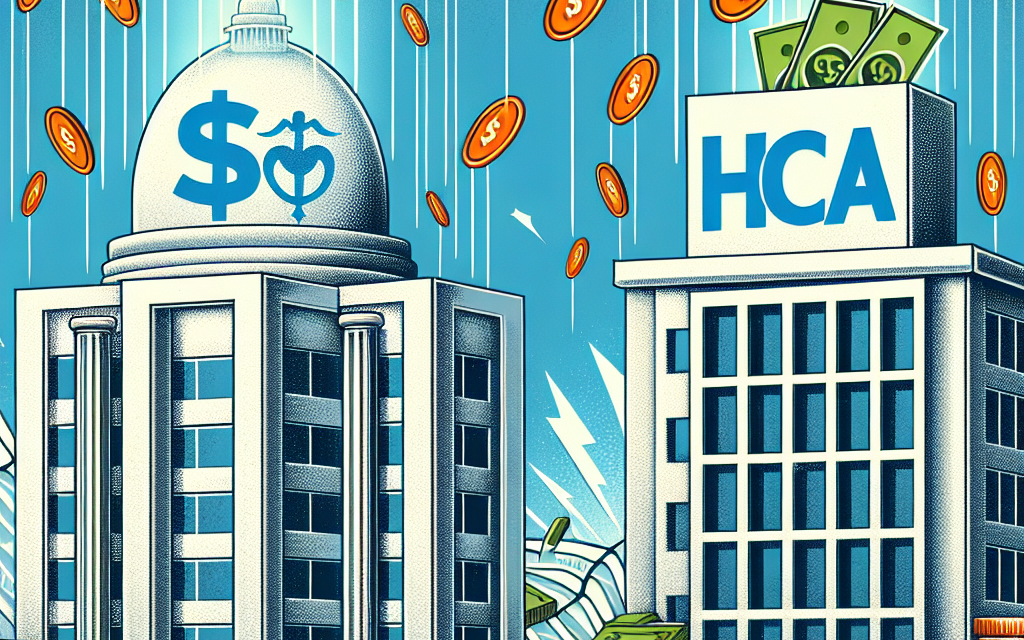UHS and HCA May Benefit Financially from Increased State-Directed Medicaid Payments

The healthcare industry is a complex ecosystem where financial dynamics play a crucial role in shaping the services provided to patients. Among the key players in this sector are Universal Health Services (UHS) and HCA Healthcare, two of the largest hospital operators in the United States. Both organizations have a significant stake in Medicaid, a government program that provides health coverage to low-income individuals and families. Recent policy changes and increased state-directed Medicaid payments have the potential to impact these organizations financially. This article delves into how UHS and HCA may benefit from these changes, exploring various facets of the issue.
Understanding State-Directed Medicaid Payments
State-directed Medicaid payments are a mechanism through which states can direct Medicaid funds to specific healthcare providers. These payments are designed to ensure that Medicaid beneficiaries have access to necessary healthcare services, while also supporting the financial stability of healthcare providers. The Centers for Medicare & Medicaid Services (CMS) allows states to implement these payments under certain conditions, often requiring states to submit proposals that demonstrate how the payments will improve care quality and access.
In recent years, there has been a growing trend of states utilizing state-directed payments to address various healthcare challenges. These payments can take different forms, such as supplemental payments, value-based payments, or directed payments to specific provider types. The flexibility offered by state-directed payments allows states to tailor their Medicaid programs to meet local needs and priorities.
For UHS and HCA, increased state-directed Medicaid payments can provide a significant financial boost. These payments can help offset the costs of providing care to Medicaid patients, who often have complex healthcare needs and may require more resources than other patient populations. Additionally, state-directed payments can incentivize hospitals to improve care quality and patient outcomes, aligning financial incentives with healthcare goals.
- Supplemental Payments: These are additional payments made to providers to cover the costs of providing care to Medicaid patients.
- Value-Based Payments: These payments are tied to specific performance metrics, encouraging providers to improve care quality and efficiency.
- Directed Payments: States can direct payments to specific provider types, such as hospitals or primary care providers, to address local healthcare needs.
The Financial Impact on UHS
Universal Health Services (UHS) is one of the largest hospital management companies in the United States, operating over 400 facilities across the country. UHS provides a wide range of services, including acute care, behavioral health, and ambulatory services. Medicaid is a significant payer for UHS, particularly in its behavioral health division, where many patients rely on Medicaid for coverage.
Increased state-directed Medicaid payments can have a substantial financial impact on UHS. These payments can help UHS cover the costs of providing care to Medicaid patients, who often require more intensive services than other patient populations. Additionally, state-directed payments can provide UHS with the resources needed to invest in quality improvement initiatives, such as implementing new care models or expanding access to services.
For example, UHS has been involved in several state-directed payment programs aimed at improving behavioral health services. These programs have provided UHS with additional funding to expand access to mental health and substance use disorder treatment, improve care coordination, and enhance patient outcomes. By participating in these programs, UHS can align its financial incentives with its mission to provide high-quality care to all patients.
Moreover, increased state-directed Medicaid payments can help UHS navigate the financial challenges posed by the COVID-19 pandemic. The pandemic has placed significant strain on healthcare providers, leading to increased costs and reduced revenues. State-directed payments can provide UHS with the financial stability needed to weather these challenges and continue providing essential services to Medicaid patients.
The Financial Impact on HCA Healthcare
HCA Healthcare is another major player in the U.S. healthcare industry, operating over 180 hospitals and 2,000 sites of care across 21 states. Like UHS, HCA relies heavily on Medicaid as a payer, particularly in states with large Medicaid populations. Increased state-directed Medicaid payments can provide HCA with a significant financial boost, helping the organization cover the costs of providing care to Medicaid patients and invest in quality improvement initiatives.
HCA has been involved in several state-directed payment programs aimed at improving care quality and access. These programs have provided HCA with additional funding to implement new care models, expand access to services, and enhance patient outcomes. For example, HCA has participated in value-based payment programs that incentivize providers to improve care quality and efficiency. By participating in these programs, HCA can align its financial incentives with its mission to provide high-quality care to all patients.
Increased state-directed Medicaid payments can also help HCA navigate the financial challenges posed by the COVID-19 pandemic. The pandemic has placed significant strain on healthcare providers, leading to increased costs and reduced revenues. State-directed payments can provide HCA with the financial stability needed to weather these challenges and continue providing essential services to Medicaid patients.
Furthermore, HCA’s involvement in state-directed payment programs can enhance its reputation as a leader in healthcare quality and innovation. By participating in these programs, HCA can demonstrate its commitment to improving care quality and patient outcomes, which can enhance its reputation among patients, payers, and policymakers.
Case Studies: Successful Implementation of State-Directed Payments
Several states have successfully implemented state-directed payment programs that have benefited healthcare providers like UHS and HCA. These case studies provide valuable insights into how state-directed payments can improve care quality and access while also providing financial stability to providers.
One notable example is Texas, which has implemented a state-directed payment program known as the Delivery System Reform Incentive Payment (DSRIP) program. The DSRIP program provides funding to hospitals and other providers to implement innovative care models and improve care quality. UHS and HCA have both participated in the DSRIP program, using the funding to expand access to services, improve care coordination, and enhance patient outcomes.
Another example is California, which has implemented a state-directed payment program known as the Public Hospital Redesign and Incentives in Medi-Cal (PRIME) program. The PRIME program provides funding to public hospitals and other providers to implement new care models and improve care quality. UHS and HCA have both participated in the PRIME program, using the funding to expand access to services, improve care coordination, and enhance patient outcomes.
These case studies demonstrate the potential benefits of state-directed payment programs for healthcare providers like UHS and HCA. By participating in these programs, providers can access additional funding to improve care quality and access, while also aligning their financial incentives with their mission to provide high-quality care to all patients.
Challenges and Considerations
While increased state-directed Medicaid payments offer significant benefits, there are also challenges and considerations that UHS and HCA must navigate. One of the primary challenges is the complexity of state-directed payment programs, which often require providers to meet specific performance metrics and reporting requirements. This can place an administrative burden on providers, requiring them to invest in data collection and reporting infrastructure.
Additionally, state-directed payment programs are subject to federal approval, which can create uncertainty for providers. Changes in federal policy or administration can impact the availability and structure of state-directed payments, creating financial uncertainty for providers like UHS and HCA.
Another consideration is the potential impact of state-directed payments on healthcare disparities. While these payments can improve access to care for Medicaid patients, they may not address underlying disparities in healthcare access and outcomes. Providers like UHS and HCA must consider how state-directed payments can be used to address healthcare disparities and ensure that all patients have access to high-quality care.
Finally, providers must consider the potential impact of state-directed payments on their relationships with other payers, such as commercial insurers. State-directed payments can create financial incentives that may not align with the goals of other payers, potentially creating conflicts or challenges in negotiating contracts and reimbursement rates.
Conclusion
Increased state-directed Medicaid payments offer significant financial benefits for healthcare providers like UHS and HCA. These payments can help providers cover the costs of providing care to Medicaid patients, invest in quality improvement initiatives, and navigate the financial challenges posed by the COVID-19 pandemic. However, providers must also navigate the complexities and challenges associated with state-directed payment programs, including administrative burdens, federal approval processes, and potential impacts on healthcare disparities and relationships with other payers.
Overall, state-directed Medicaid payments represent a valuable tool for improving care quality and access for Medicaid patients, while also providing financial stability to healthcare providers. By participating in these programs, UHS and HCA can align their financial incentives with their mission to provide high-quality care to all patients, ultimately benefiting both their organizations and the patients they serve.





